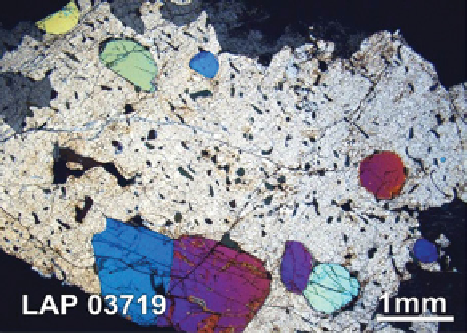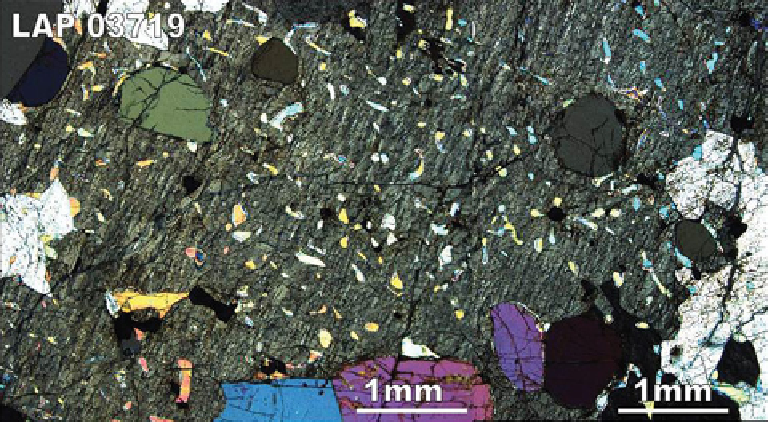Geology Reference
In-Depth Information
Aubrite
62.02 g
Found January 1, 2004
5.5 × 4.0 × 2.5 cm
Weathering = B
oxygen isotopic value with Earth, Moon, and enstatite chondrites, and are
the most reduced basalts known. They contain unusual sulfides, low Feo
silicates, and sodic plagioclase feldspar. Some aubrites contain a basaltic
vitrophyre lithology that may represent a basaltic component from the
aubrite parent body. Their low Feo contents and small amount of metal
would give these samples a high albedo for a parent asteroid.
,0
,1
LAP 03719
Plate 51
MiNERALogy
SigNiFiCANCE
LAP 03719 is an unbrecciated aubrite consisting of essen-
tially Feo-free enstatite, low Cao diopside, and olivine
with minor nickel-iron metal, troilite, daubreelite, and
alabandite. Enstatites reach 1 cm diameter, and contacts
between enstatite grains are often interfingering. Diopside
exsolution blebs occur within enstatite and at enstatite-
enstatite grain boundaries. olivine (Fo
99.7
), which occupies
~20% of the section, reaches 3 mm. Although the
pyroxene textures are reminiscent of some aubrite clasts,
the unbrecciated nature, texture, and olivine abundance
in this aubrite are unique.
LAP 03719 is unique among the aubrites in being both
unbrecciated and olivine-rich. This meteorite allows us to
test the proposed link between the enstatite chondrites
and the aubrites. Unlike enstatite chondrites, aubrites
tend to contain significant proportions of olivine. Models
for olivine formation during melting of the aubrite par-
ent body range from reduction of silica to metallic silicon
to co-crystallization with rare alkaline phases like roed-
derite. The absence of these proposed phases in LAP
03719 may suggest that aubrites could not have formed
from known enstatite chondrites.
References [383-384]



